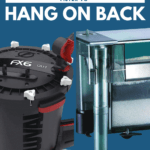What are the differences between a canister filter and one of those filters you hang on the back of the tank? If you’ve owned an aquarium at any point in your life, you’ve likely heard that question at some point, and may have even uttered it yourself.
Canister Filter VS Hang on Back Comparisons
| HOB Filter | Canister Filter |
|---|---|
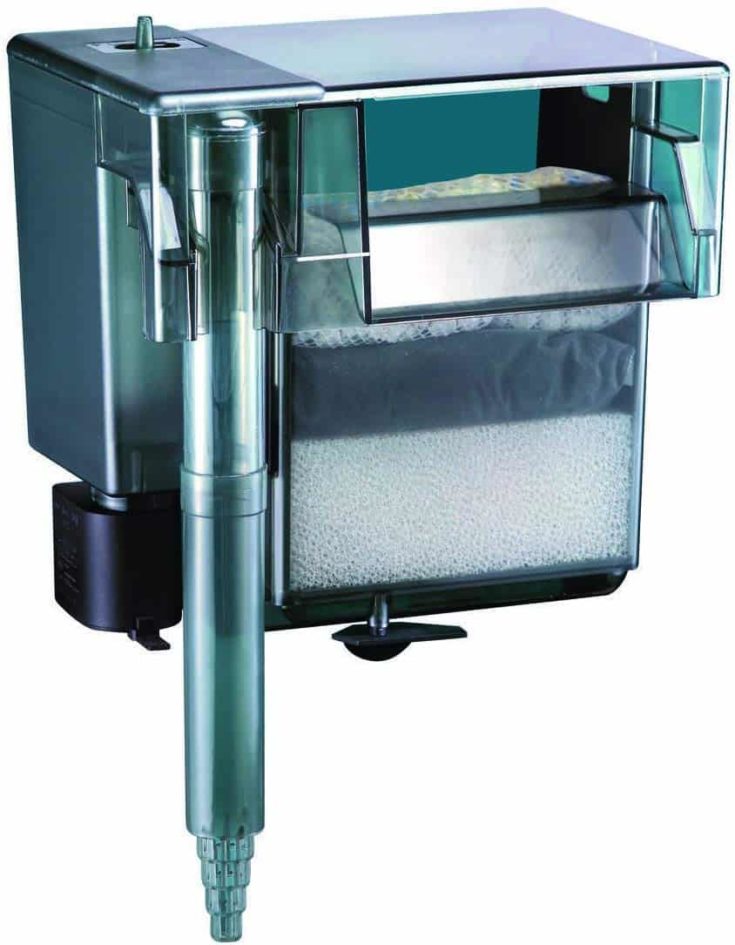 |
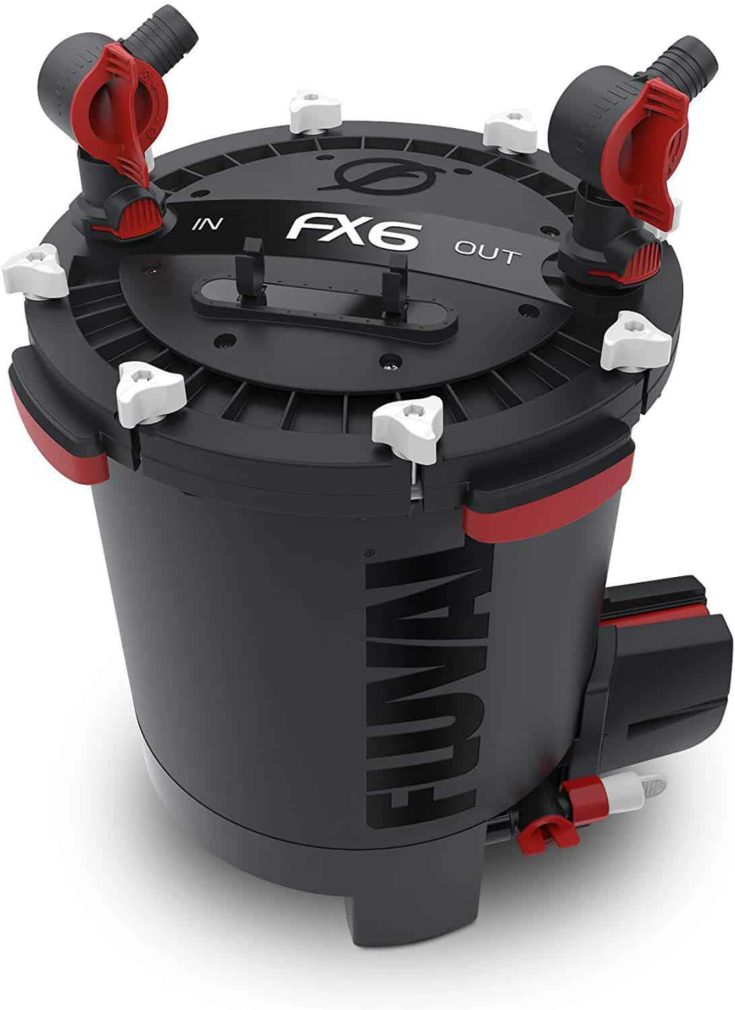 |
|
|
They both filter tank water right, so what’s the big deal? Believe it or not, there’s actually some significant variance between the workings of both, and their advantages and disadvantages. So today we’re going to take a closer look at the canister filter versus the ‘hang on back’ filter debate to get to the bottom of it.
The Purpose of a Tank Filter
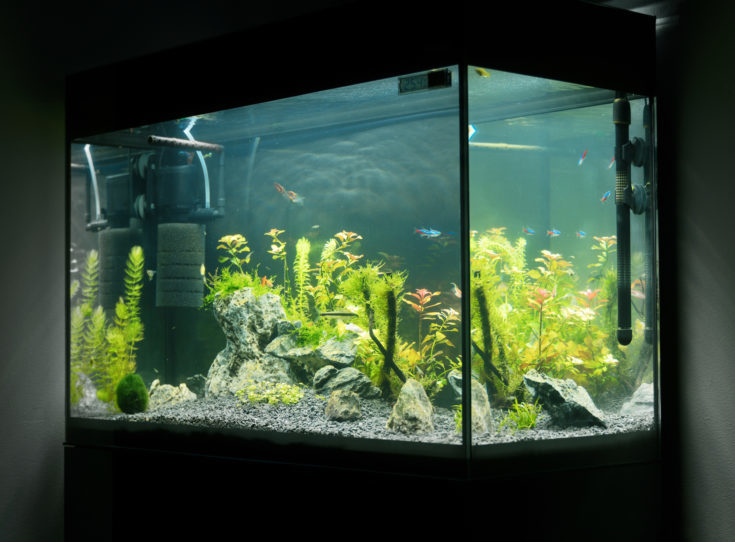
As time goes by, the water in your fish tank will start to become dirty. The denizens of your tank, mainly fish and turtles, will excrete waste, particles of food will build up, and various toxic compounds that are harmful to your aquarium community will increase.
To remove these from the tank environment, a strong filter that uses the 3-stage process (it combines mechanical, biological, and chemical means of purifying water) is the best option. Both canister filters and Hang On Back (HOB) filters are capable of this level of water filtration.
HOB Filters
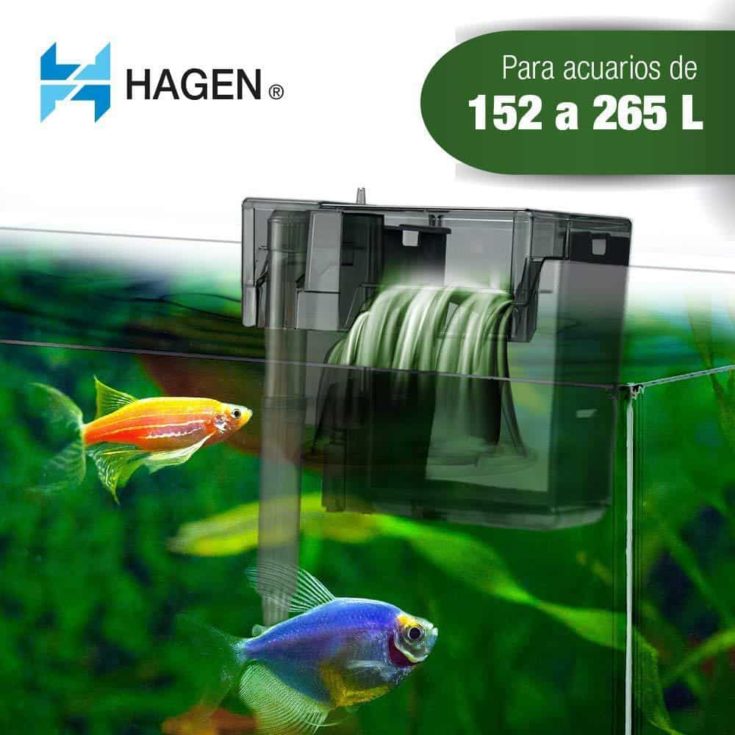
HOB filters are considered ideal for beginners due to their ease of use. Also known as Power Filters, all of their components are self-contained, and users merely need to hang them on the back of their fish tank.
The HOB filter’s internal pump draws water from the aquarium and runs it through the filter’s integrated filter cartridge, which contains the materials necessary to purify the water. HOB filter’s internal workings may vary slightly, but they by and large involve the same methods of filtration.
Filtration
For mechanical filtration, Power Filters use a standard floss or foam. Chemical filtration is done via activated carbon, and biological filtration occurs in both of the previous stages as the surfaces in the filter cartridge promote the growth of beneficial bacteria.
More advanced filters will have extra space for users to include various resins for additional chemical filtration by alternate means and for the incorporation of bio-wheels that allow for maximum surface area for beneficial bacteria (resulting in more biological filtration).
HOB Filter Process
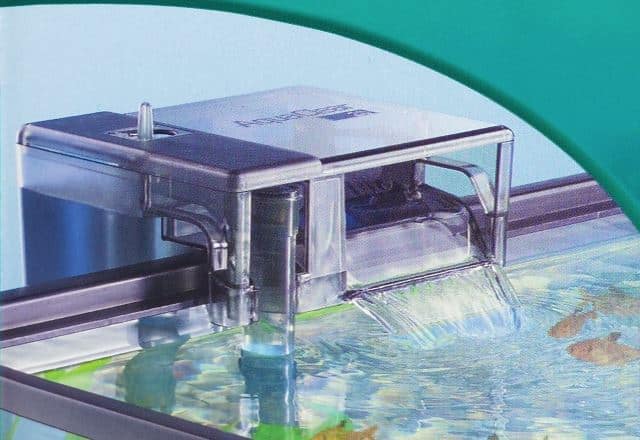
There are drawbacks to the HOB filter’s process. Most notably, the mechanical floss is easily clogged, and must frequently be cleaned to maintain efficacy. They are also notoriously difficult to use with freshwater planted and saltwater tanks.
The reason? Power filters disrupt the surface of the water, which dramatically alters carbon dioxide levels, and also allows salt to infiltrate the filter’s inner workings. If used with a saltwater aquarium, they will require a greater standard of maintenance to maintain working order.
Canister Filters
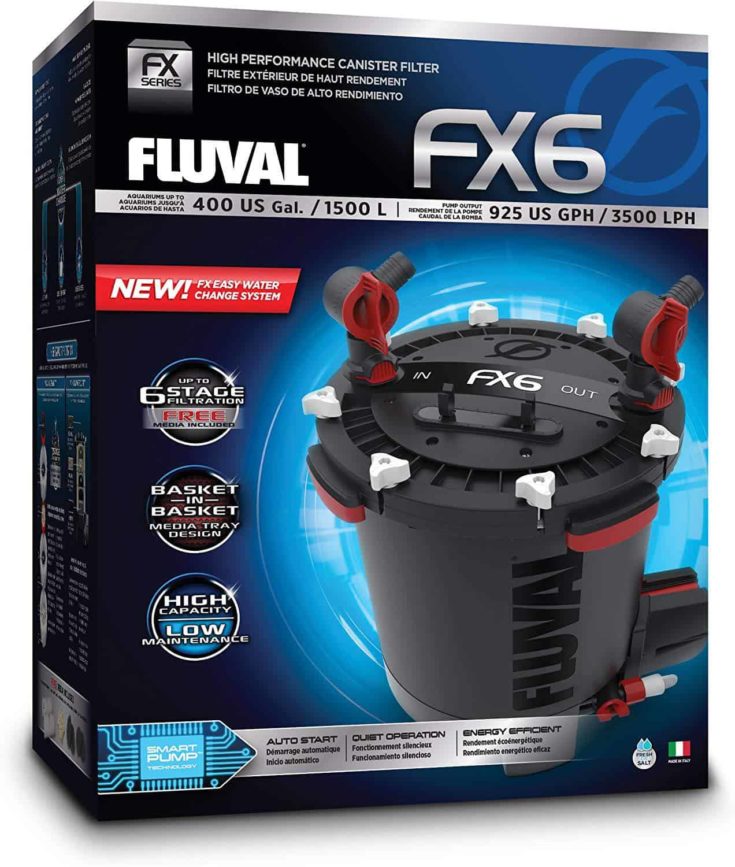
Canister filters, by comparison, have no such issues with planted and saltwater aquariums, and can be used in freshwater as well. A canister is a unit that sits outside of the tank and has hoses that can be submerged in the tank to remove and then filter water.
There are tons of notable brands that give offer this type of filter. To name a few, we have Fluval, Marineland, and others.
They provide superior levels of both mechanical and chemical filters due to the method by which they pressurize and force water through their various stages.
Check The PriceBiological Filtration
Biological filtration can sometimes be limited due to the lack of water/air contact (a result of the high pressurization), but this drawback is offset somewhat by the canister filter’s size and ability to house large amounts of filter media.
Low biological filtration can also be made a non-issue by including an additional biological filter. With the combination of a secondary biofilter, canister filters become the premier for both saltwater and reef aquariums.
They also provide a greater amount of range in filter media. Often, the particular media can be customized, mixed, and inserted into canister filters in varying amounts to fine tune the filtration your tank receives.
UV Light Purifiers
Canister filters can also be equipped with UV light purifiers, which further enhance the overall cleanliness of your tank water by treating it with ultraviolet radiation, killing algae spores and other annoying contaminants.
One must bear in mind, however, that canister filters require a bit more dedication than HOB filters, as they are more complicated to set up, have many more components, need more media, etc. In return, though, you get a filter that is much more powerful, can be used on larger tanks, and can be customized to fit your individual tank setup.
Pricing

How much will you pay for these filter types? By and large, your canister filter will be the most expensive option. Most HOB filters rest squarely in the $20-$30 range, while canister filters can often run well over $100, sometimes even exceeding the $300 mark.
This is, of course, directly related to the increased functionality, versatility, and power that you get when using a canister filter in comparison to a power filter (which has greater ease of use, but much less concerning features).
The Verdict
Though they are inexpensive and mostly easy to use, HOB filters just don’t provide the same level of performance that canister filters do. This is especially important if you have tank that is large, has lots of livestock, or might be saltwater (like mine!)
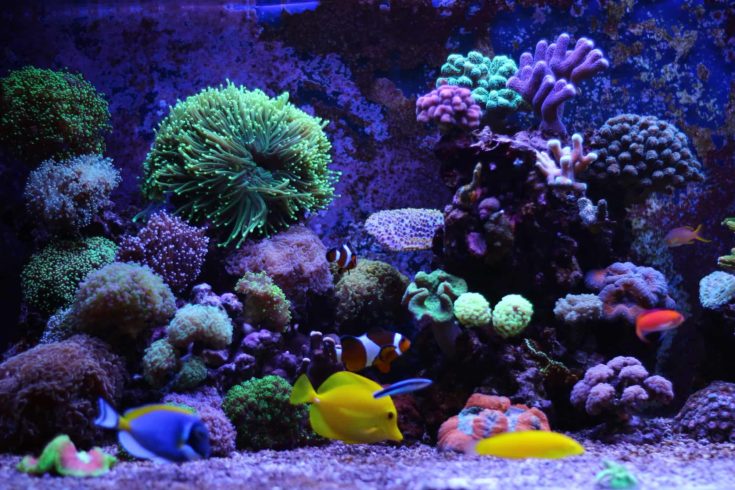
You’ll pay a little more up front, but a good canister filter more than makes up for the price by giving you plenty of use, power, the ability to customize filter media, and additional features that further augment their filtration capabilities.
My recommendation? Go all in and get the Fluval FX-6. It’s one of the most powerful canister filters on the market, can handle tanks up to 400 gallons in capacity, and includes plenty of extras (like the self-starting system and Fluval’s Smart Pump Technology) that make using it easier than many other canister filters.
Do you use a power filter or a canister filter on your tank? Maybe you have multiple setups and have tried both? Whatever you think, let us know in the comments!
